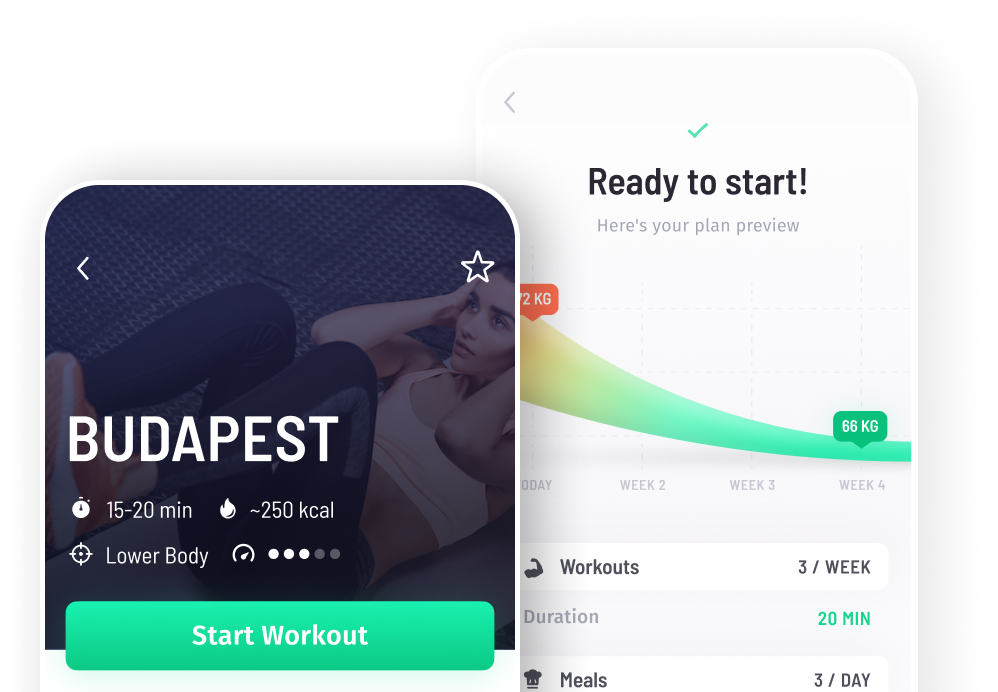You might have heard talk of plyometric training or seen it advertised in your gym and thought to yourself, ‘what is plyometric training’ and what makes it special? Plyometric training gives you the opportunity to change up your workout routine and add in some fun exercises where you can see just what your body can really do. So let’s go on to learn what plyometric training is, what its benefits are, and some examples of plyometric exercises.
What is plyometrics?
Let’s first define plyometrics. ‘Plyometrics’ is a combination of Greek roots, ‘plio’ and ‘metric’. ‘Plio’ means “more” and ‘metric’ means “to measure”. In the fitness world, the plyometrics definition is the following: a type of exercise that increases muscle power by the rapid stretching and contracting of muscles in a short interval of time.
What is plyometric training?
Plyometric training is often referred to as ‘plyometrics’, ‘shock training’ or ‘jump training’. It involves jumping, hopping, bounding and/or skipping. Words you will commonly see associated with plyometric training are: explosive, speed-strength, and power.
With this type of training, you exert maximum force in minimum time. In other words, you perform powerhouse moves with all your strength. Plyometric training makes you tired faster, so it is important to take your time while doing them so you can focus on your form and getting the most out of each move.
Benefits of plyometrics
Improve your strength, power, and speed
The more you practice plyometrics, the more you will improve your strength, power, and speed.
Better coordination
As you are exerting significant power and moving your body weight, a certain level of coordination is naturally required. You do need to be somewhat coordinated when starting with plyometric training, and it will only improve the more do this type of training.
Activate your fast-twitch muscle fibers
Plyometric exercises activate your fast-twitch muscle fibers, which generate your force and wear out faster than slow-twitch muscle fibers.
It’s fun!
Standard weights and workouts can get boring. It’s fun to jump around and push your body to its limit.
Examples of plyometric exercises
Plyometric exercises are highly coordinated movements. For most plyometric exercises, the key is to do 3-8 reps for 3-6 sets. Be sure to warm up beforehand and cool down/stretch after your workout.
Jumping Lunges
Muscles Involved: Calves, Glutes, Hamstrings, Quadriceps
- First, stand with feet shoulder width apart and arms extended by your sides.
- Jump while bringing one leg directly in front of you and extending the other leg directly behind you.
- Lower your body while maintaining an erect torso by bending your forward knee and lowering your back knee until it almost comes in contact with the ground.
- Pushing through your forward leg with as much power as you can, jump.
- Land the jump by returning to the starting position and slightly bending your knees.
- Complete subsequent reps starting from step 2, alternating legs.
Plyometric Push-Ups
Muscles Involved: Deltoids, Pectorals, Triceps Brachii
- Begin by lying flat on the floor, stomach down, with your knees fully extended, and hands positioned wider than shoulder width and at the level of the middle of your chest.
- Squeezing the abs and glutes while maintaining a flat back, begin to push through the palms of your hands with as much power as possible.
- Once in the air, begin to extend your arms slightly to catch yourself in the starting position while protecting your face from contacting the floor.
- Complete subsequent reps starting from step 2.
Lateral Jumps
Muscles Involved: Calves, Glutes, Hamstrings, Hip Adductors, Quadriceps
- First, stand upright with feet wider than shoulder width apart.
- Bend one of your knees, pointing the toes of that leg outward.
- Lean your torso laterally in the direction of your bent leg.
- Push through the foot of your bent leg while extending your leg to jump in the opposite direction.
- While in mid-air bend at the knee of the leg you pushed off with and bring it behind your body.
- Prepare to land with the opposite leg.
- Upon landing, do not bring the leg behind you to the floor, instead bend your knee slightly and push through the foot that is on the floor to initiate another lateral jump in the direction you’d just come from.
- Complete subsequent reps starting from step 5.
Prisoner Squats
Muscles Involved: Glutes, Hamstrings, Quadriceps
- Begin by standing upright with feet positioned wider than shoulder width, toes pointed outward, and arms behind your head.
- Bend at both your knees and hips, while maintaining a flat back and squeezing your butt and abs.
- Continue to lower yourself without pulling on your neck with your arms until your thighs are parallel to the ground.
- Stand upright.
- Complete subsequent reps starting from step 2.
Before getting started with plyometric training, it is recommended to work with a trainer to ensure you are utilizing the proper technique.
Did you enjoy this article? Share it!

